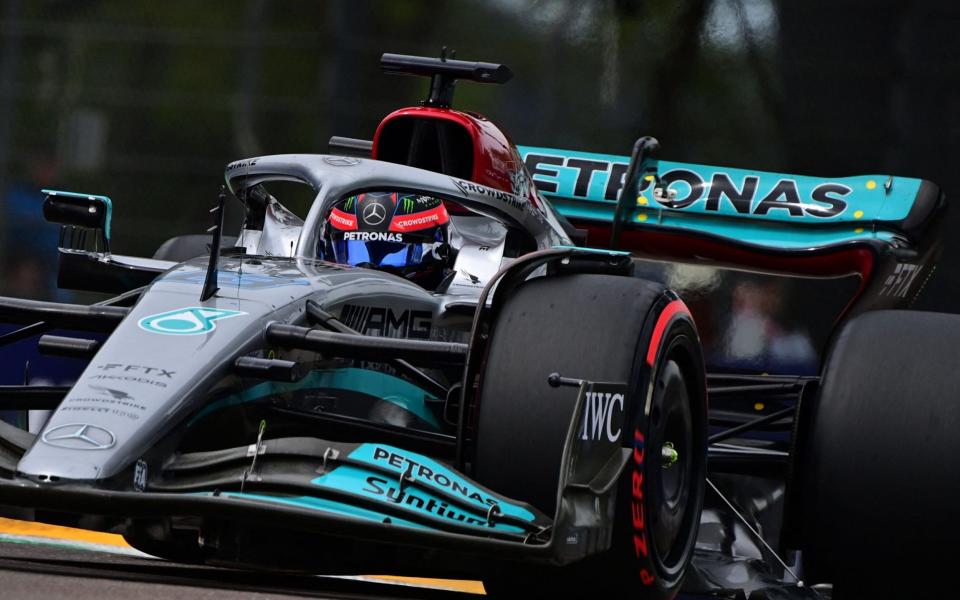Mercedes' 'unsustainable' and 'extreme' porpoising is no longer just a performance issue

Before a wheel was turned in anger in this Formula One championship, the message from Mercedes was that they would not be competing for wins at the start of the season.
Given their unprecedented success and their status as the most dominant team in F1’s history – as well as the nature of pre-season kidology – that claim was met with some scepticism.
Four races into the 2022 season and Mercedes’ results are perhaps even worse than their own low expectations. Closer to the midfield than the front-runners, their rivals have stolen a march on them. The Silver Arrows are 47 points behind Ferrari.
It would be worse were it not for the Scuderia’s driver errors and Red Bull’s reliability problems. The main performance issue so far has been related to ‘porpoising’, or the car bouncing up and down on the straight at high speed.
It became apparent for several teams during the first pre-season test in Barcelona in February and remains an issue, to varying degrees, now. Mercedes are suffering more than other teams and it was particularly bad for them at Imola last weekend.
As uncomfortable as it was for the drivers, it was primarily a performance issue up to that point.
"It feels like turbulence on an aeroplane basically, going up and down the whole straight. I can’t say it feels nice, it makes you a little bit ill," said Ferrari’s Charles Leclerc during the first test in Spain.
But after two tests and four races of the season, Mercedes’ George Russell says the physical effects were worsened at Imola – which has a 15-second long section at full power from the second Rivazza to the Tamburello chicane – and he does not believe it is sustainable for drivers’ bodies.
"The bouncing, it really takes your breath away. It's the most extreme I've ever felt it.
"I really hope we find a solution and I hope every team struggling with the bouncing finds a solution, because it's not sustainable for the drivers to continue.
"This is the first weekend I've truly been struggling with my back, and almost like chest pains from the severity."
Drivers can and do train for the incredible amounts of force put through their bodies over the course of a grand prix weekend. It is why they spend hours on funny-looking contraptions in pre-season and why those who come back after a while out, like Kevin Magnussen and Nico Hulkenberg, struggle physically straight away.
Neck training 💪💪💪#r8g #f1 pic.twitter.com/nPwWS925qx
— Romain Grosjean (@RGrosjean) March 18, 2017
But there is little you can do to prepare yourself for the discomfort levels of persistent porpoising. "It's just what we have to do to go and do the fastest laps," Russell added.
Looking at footage of the drivers in the car in Imola, you soon understand how it might become a longer-term problem, and we are only four races in.
It is not just the drivers that are taking the extra strain, though. Russell broke a floor stay in practice (a component only permitted in the regulations once porpoising emerged at pre-season testing) at Imola and there will no doubt be other concerns about excessive wear and tear to the car’s undersides.
Mercedes are not the only team to fail to solve the porpoising issue. Aston Martin’s sluggish start to the season seems to be another victim of that. Even championship leaders Ferrari were experiencing it acutely at the Australian Grand Prix two weeks ago.
Why are Mercedes so far off the pace and Ferrari at the front, then? Clearly, not all porpoising is equal and Ferrari’s version appears to be less extreme, meaning that they can run their car more optimally. In other words, under braking their car remains stable so that means the porpoising is mostly a comfort issue for their drivers, rather than a performance one.
Mercedes have been more severely affected, so have to compromise their set-up and run their car at a greater ride height which has the knock-on effect of losing downforce and having to run a sub-optimal set-up.
There is some thought that the W13’s skinny sidepods have contributed to the team’s problems, as this means that more floor is exposed than their rivals. Again, there are numerous compromises that have to be made and performance is sacrificed. The tyre warm-up issues they had at Imola could be related, though Mercedes engineers say they do not know the cause. Whatever concept they came up with for the new regulations is far from being maximised.
Whatever the case, with all the brainpower they have at their disposal they have not been able to overcome this fundamental issue. Yet. Toto Wolff is more hopeful that a solution – whether partial or whole – will be found with their next upgrade for the Miami Grand Prix.
"We very much believe that the science we are putting in at the moment will help us to, in effect, run the car lower," he said.
"It is where we believe we have all the aerodynamic goodness, but we haven't been able to unlock it because of the bottoming of the car.
"If we are able to get on top of that, that means there's quite some lap time we can find. If not, we need to have another idea."
Those words seem to be as much a note of caution as much as optimism. Porpoising is only exposed in real-life running and not on the belts in the wind tunnel, hence why it seemed to surprise every team in Barcelona.
Mercedes’ update to the W13 might neither solve nor ease the problem. And “another idea” sounds slightly ominous. It is a long season. Mercedes must find a solution to ensure do not spend the rest of it as far back as they are now.
